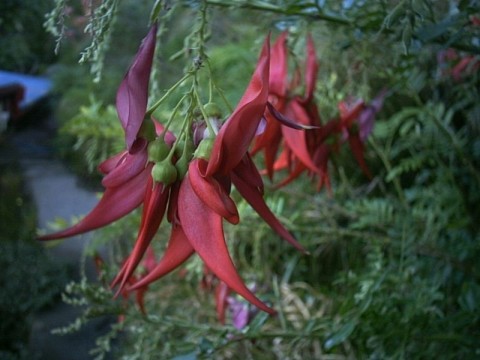Nose bouquets & visual feasts
Blogger: Ethno-botanist at Landcare Research, Sue Scheele
It’s cold and wet as I write this, but looking out the window, my eye catches a patch of ngapuka or tītīrangi, Hebe speciosa, in full flower; the rich, magenta blooms sure brightens up a miserable, grey day.
Early Maori also appreciated this splendid flower and a recent DNA study showed that some of the few existing ‘wild’ populations on the North Island western coast and in the Marlborough Sounds were almost certainly transported and planted by them.
There was no need to cultivate the plant for medicinal value, more common Hebes could be used in that way. It was grown because it was beautiful.
The colour red was highly regarded. Pohutukawa – whose flowering canopy could be likened to the red-feathered headdress worn by important Polynesian chiefs – was planted by Maori beyond its natural northern range.
Another red-flowered native was also carted about and grown in villages and garden sites – the kakabeak, or kōwhai-ngutu-kākā. It is virtually extinct in the wild; in fact, its original range and habitat preference is unclear, because most plant records are associated with historic settlements.
Sweet fragrances were also enjoyed. Crushed leaves were often enclosed in little fibre sachets hung round the neck, rubbed on skin or clothing, or soaked in oil expressed from tītoki fruit. Tarata or lemonwood, manuka, the lovely raukawa (Raukaua edgerleyi), some Celmisia and Olearia species, were among leaves used in this way. Fragrant ferns, mosses and liverworts were also used.
The speargrass, taramea, made up for its prickliness by producing a delicious scent. Dry grass was lit under the plant causing the sap to run out of the leaves where it was collected.
A common grass called kāretu (Hierochloe redolens) was widely used for its fragrance. It was woven into belts, and naturalist Joseph Banks recorded seeing women wearing strands of it as a skirt. The leaves were often strewn under sleeping mats. The fresh leaves don’t smell much, but get stronger and stronger as they dry. The scent is a bit like coconut. Kāretu was widespread but is very palatable to stock so is now usually found on protected land.
Here’s to finding colour and fragrance to lift our spirits on a bleak winters day!

